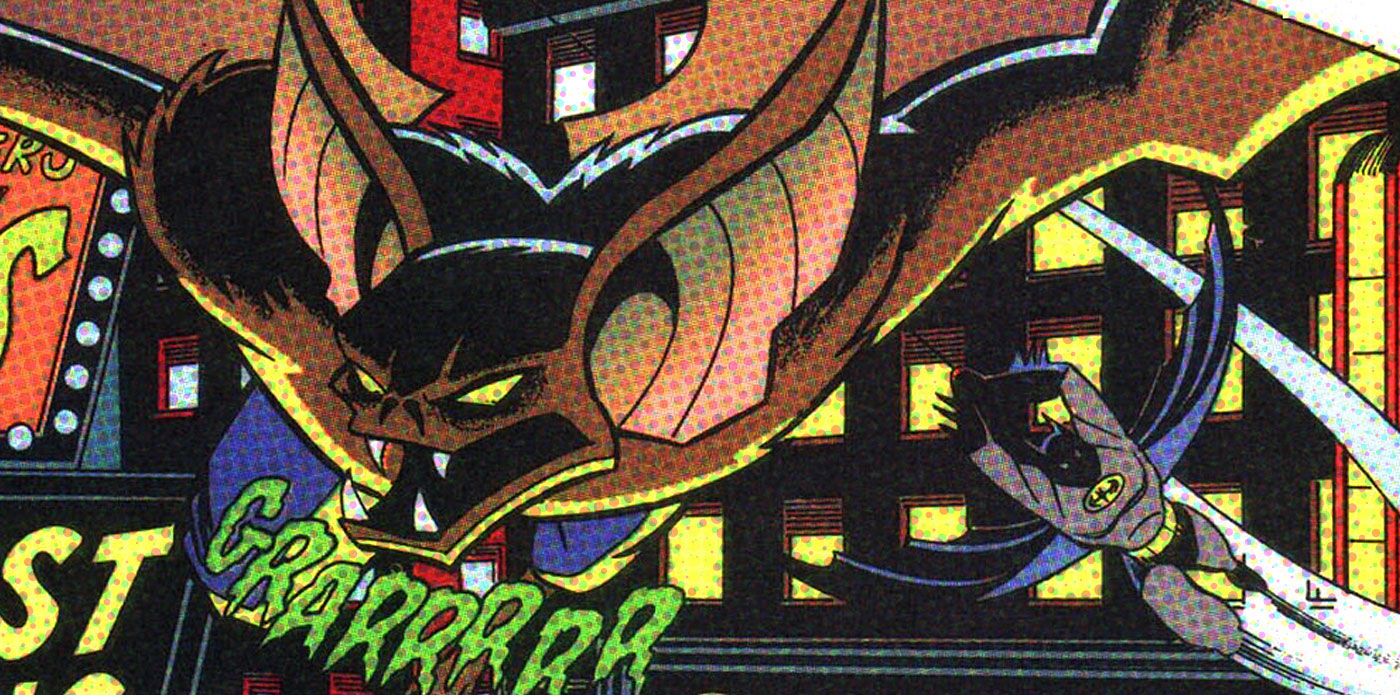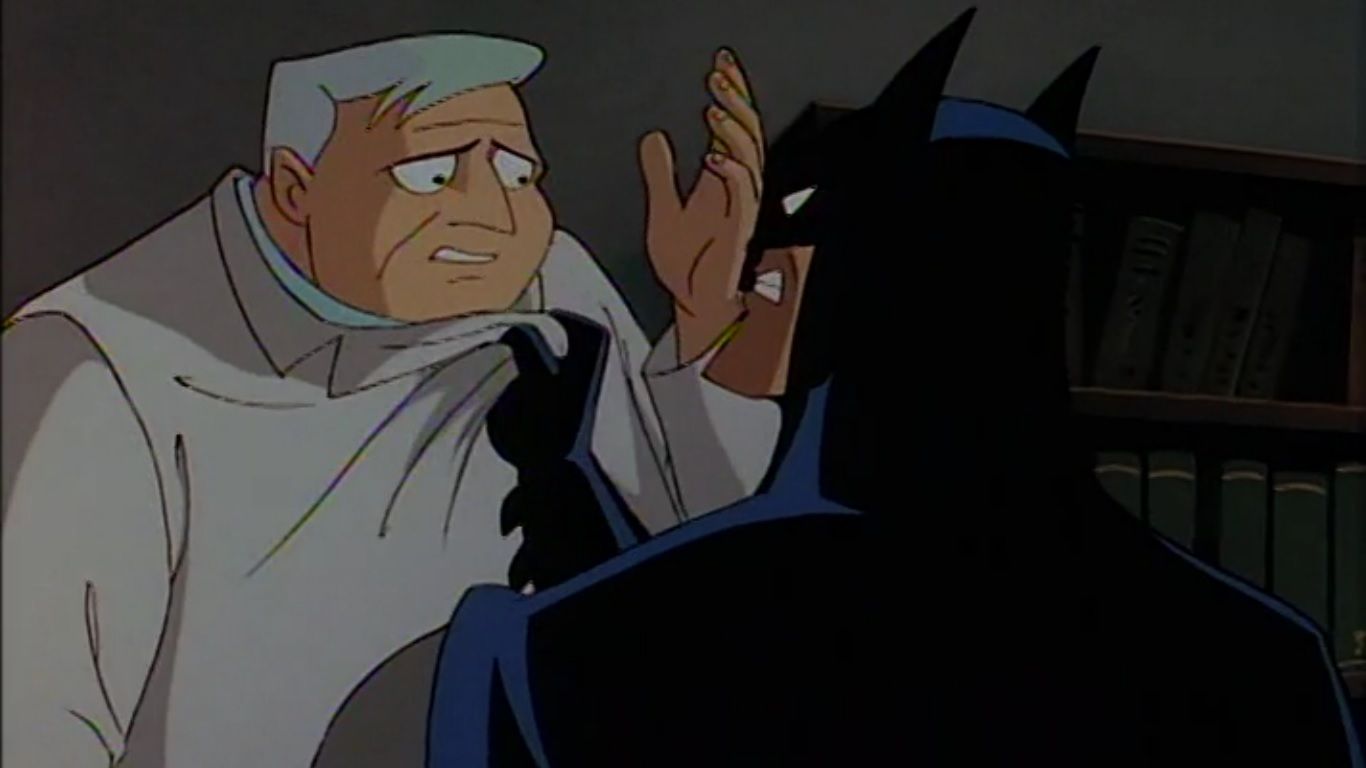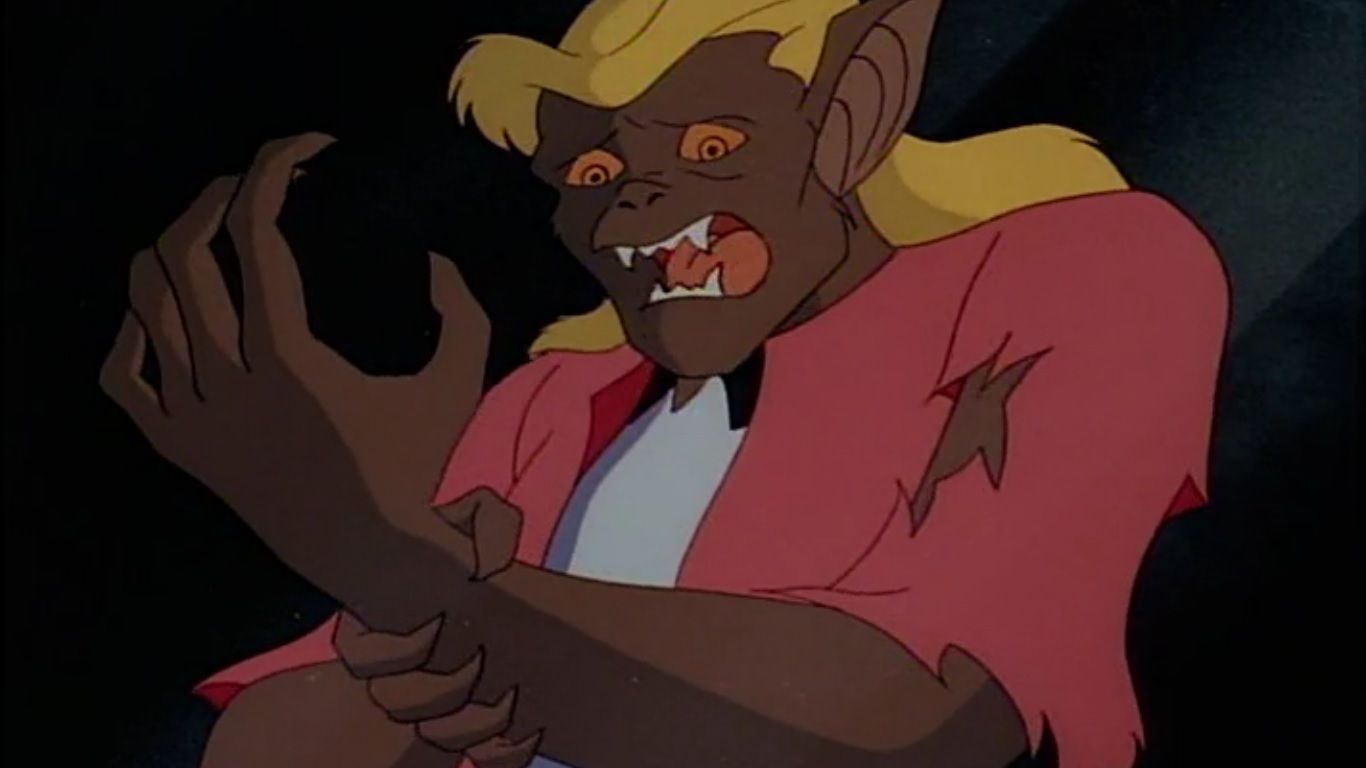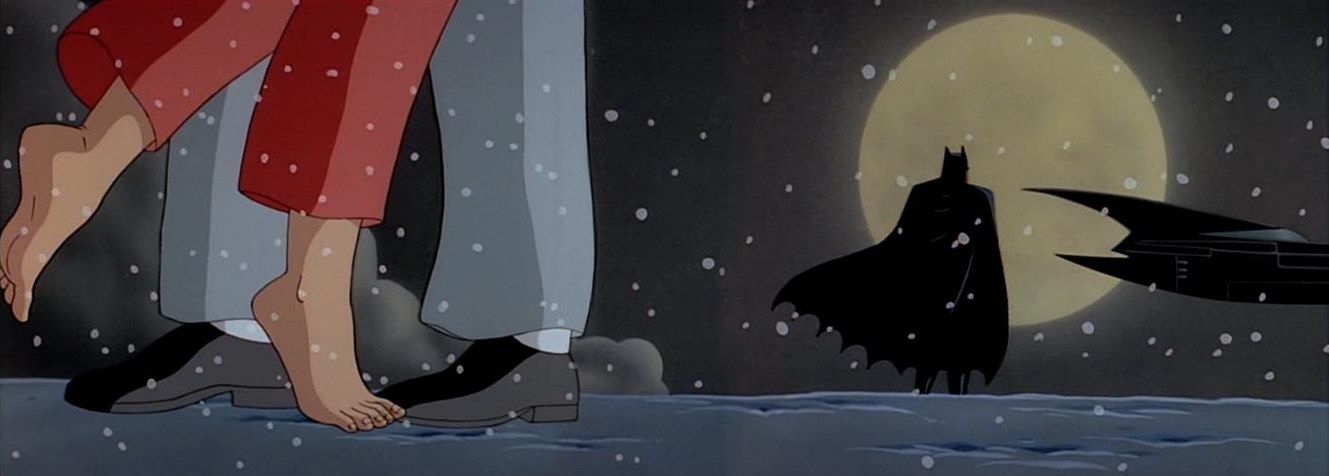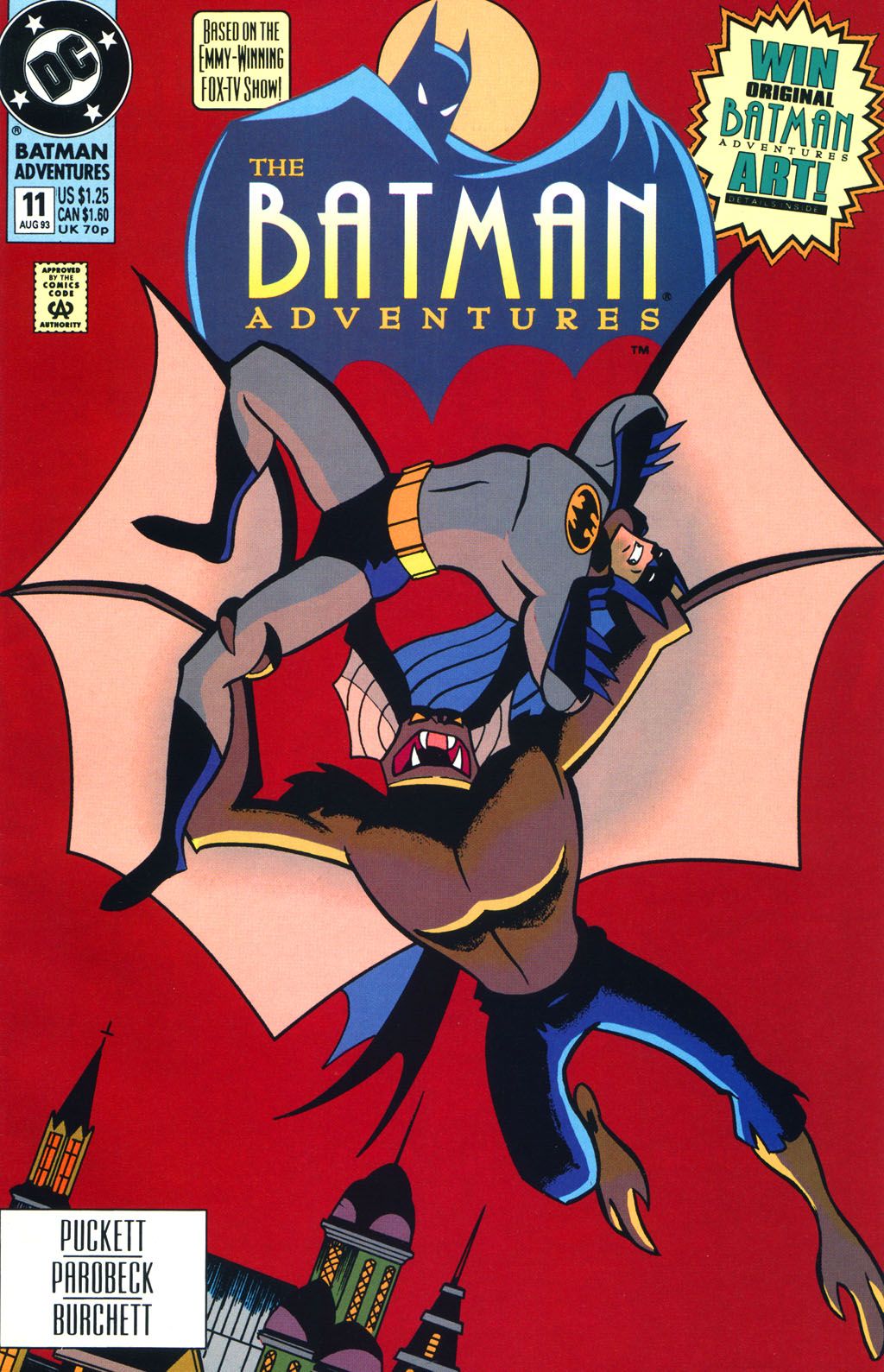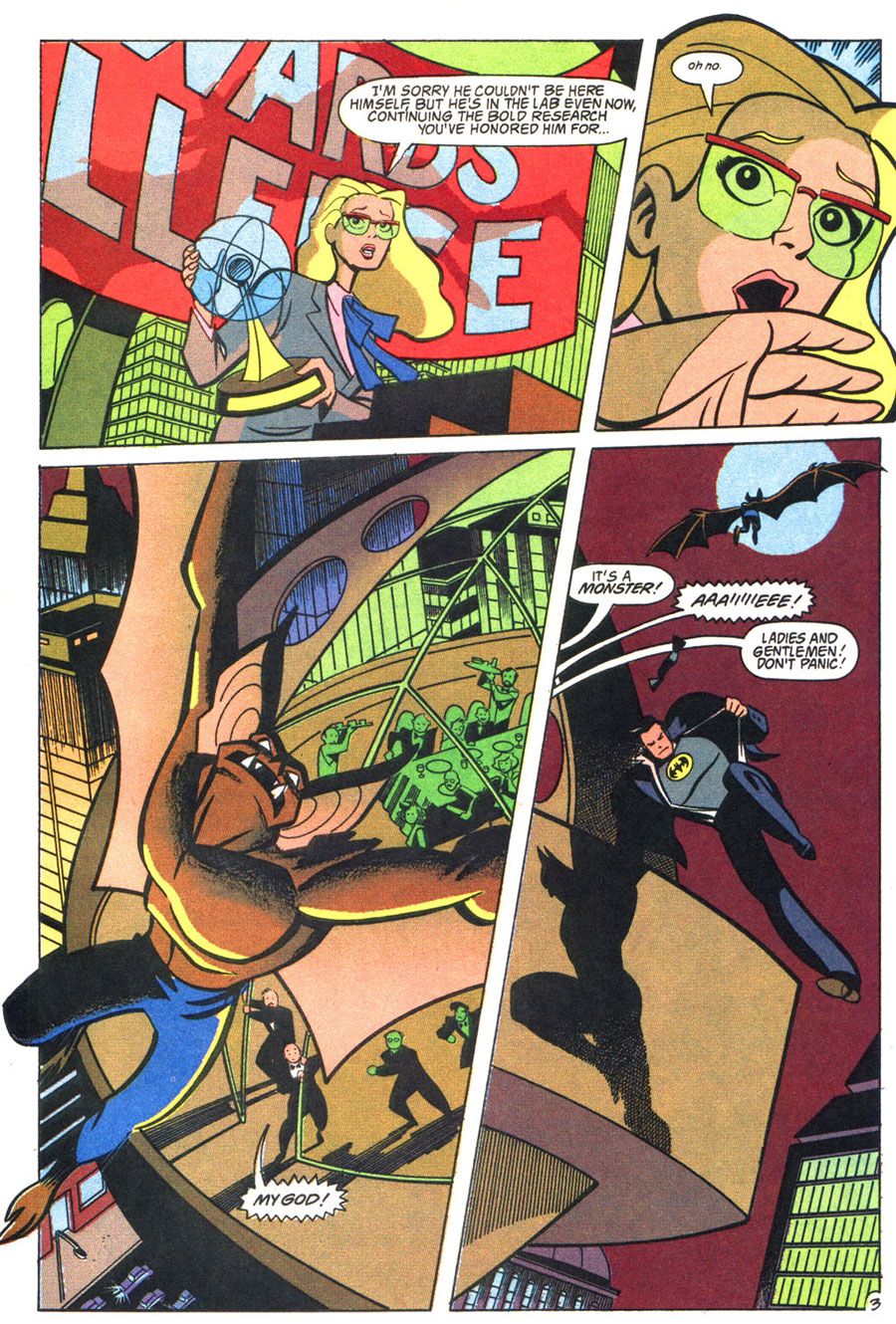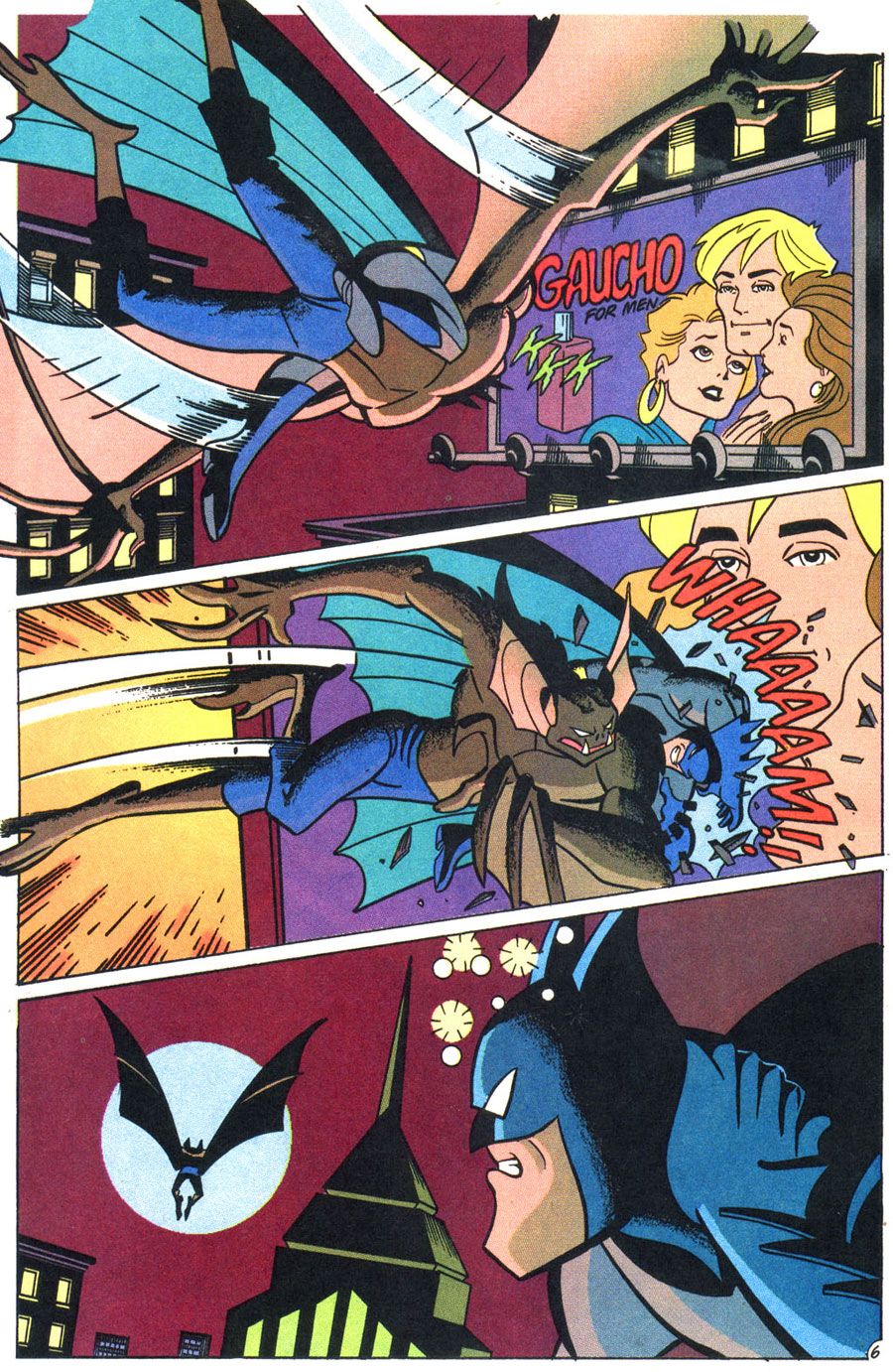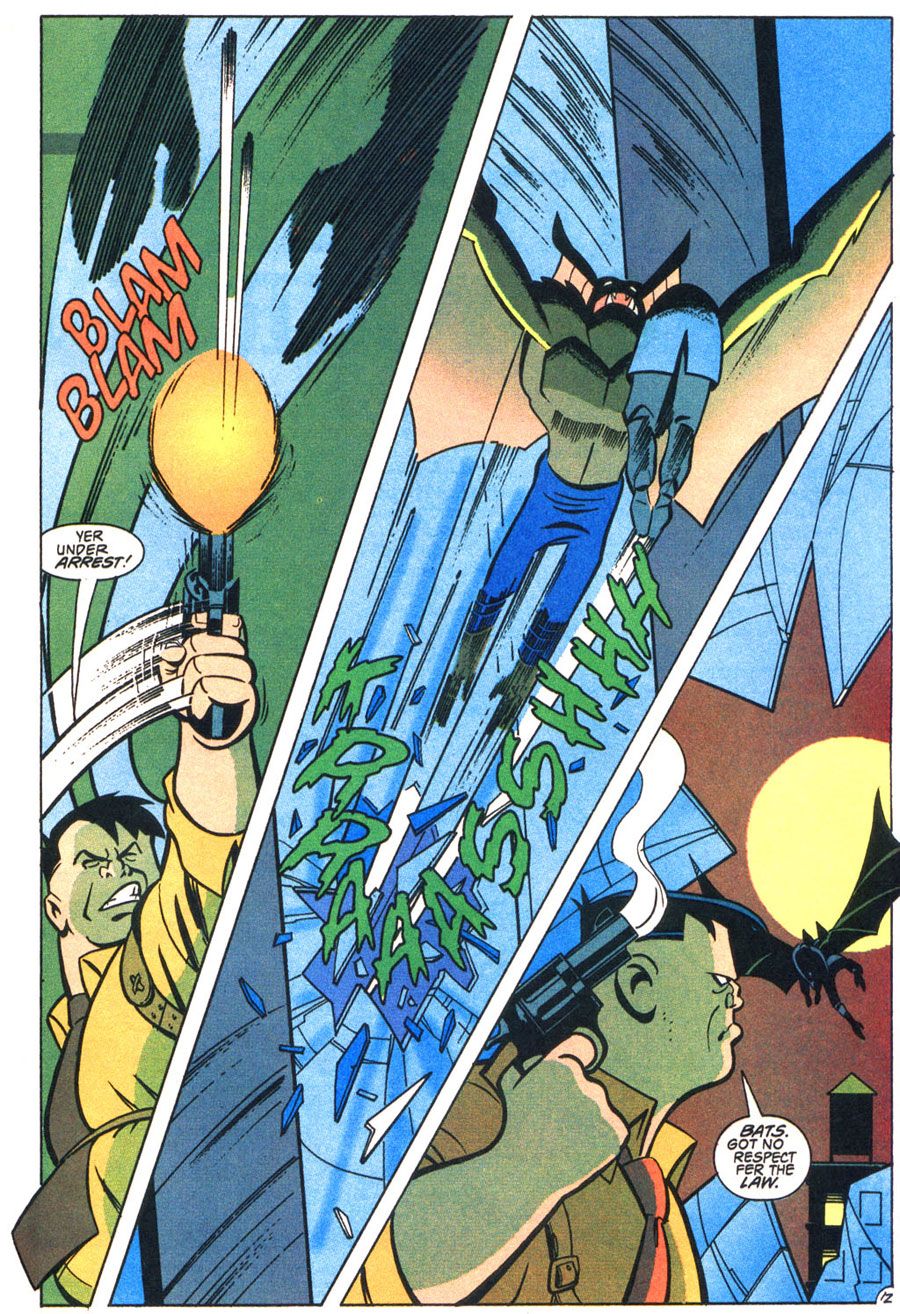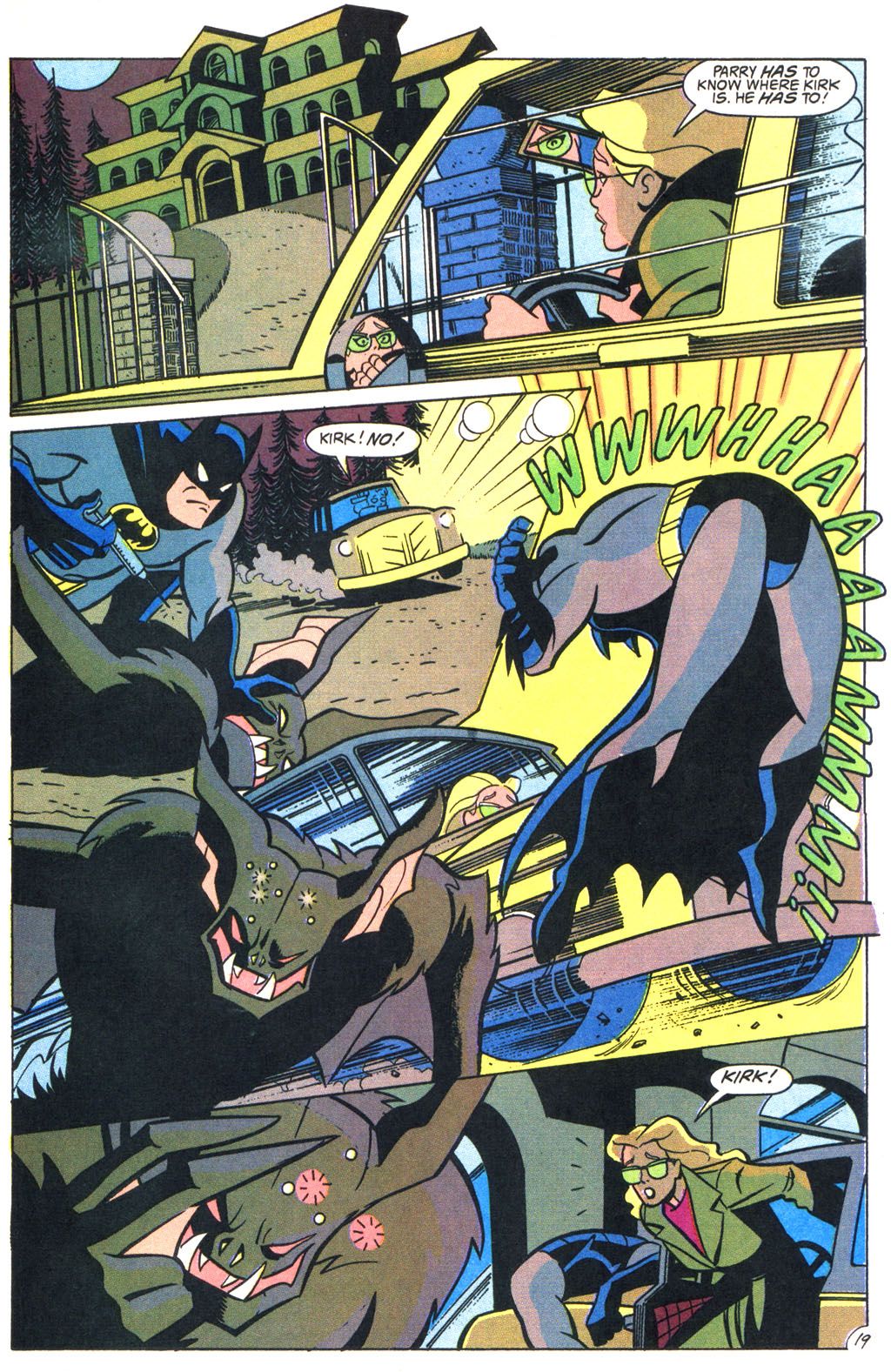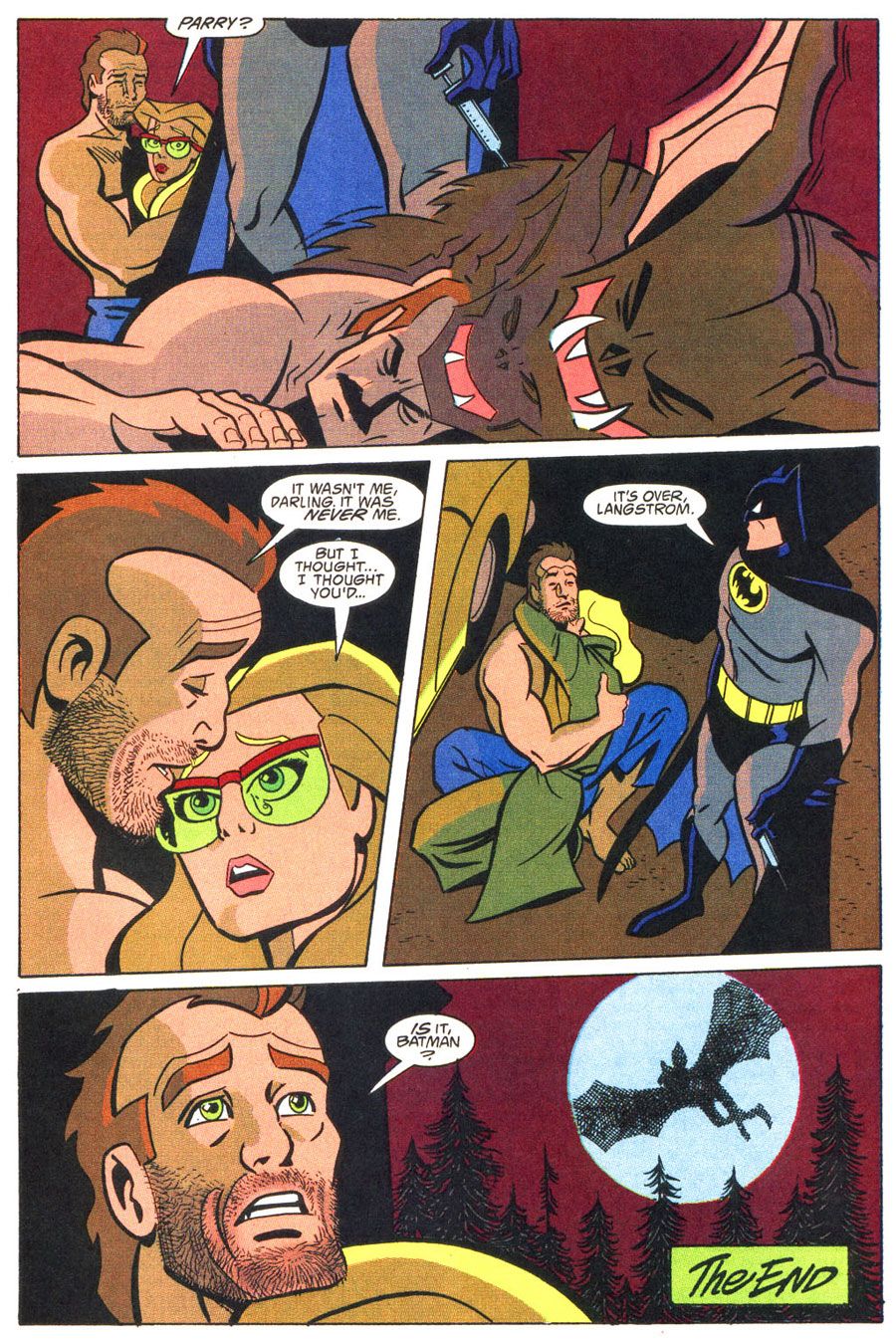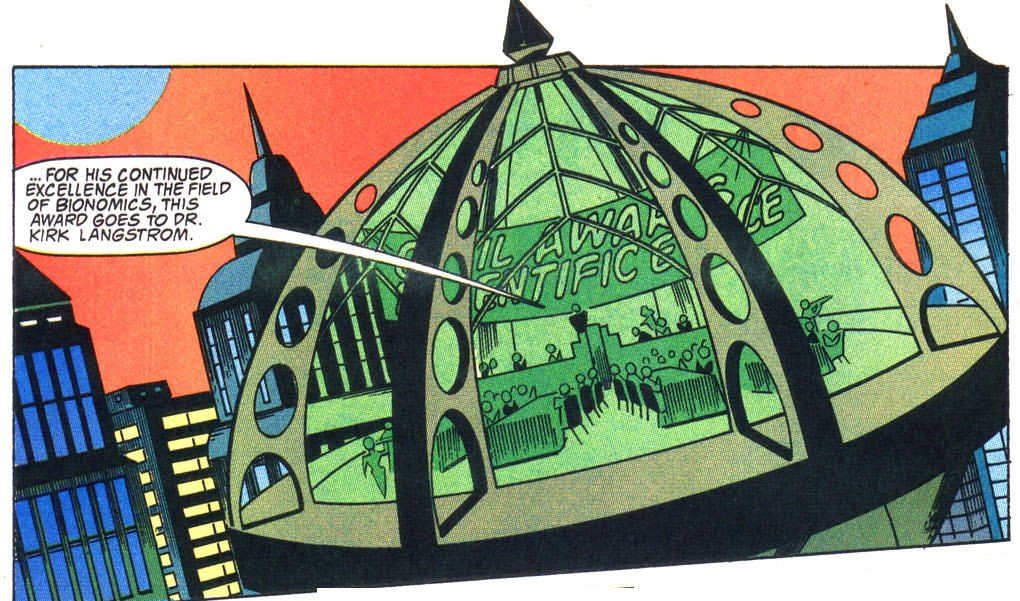Welcome to the sixth installment of Adventure(s) Time, where I examine a classic episode of an animated series from the past, and an issue of its comic tie-in that shares a similar theme. This time, the Man-Bat returns... but is Dr. Kirk Langstrom the culprit?
Man-Bat, a creation of Frank Robbins and Neal Adams, made his animated debut in the very first episode of “Batman: The Animated Series,” entitled “On Leather Wings,” which aired on September 6, 1992 (This is following “The Cat and the Claw,” which debuted as a “sneak peek” episode on September 5, 1992.) “On Leather Wings” still holds up as one of the finest episodes of the run, so you might’ve expected more than a few efforts to duplicate its success. The producers tended to shy away from Man-Bat, however, leaving most of its appearances in this continuity to the various “Adventures” comics tie-ins.
There is one direct sequel in the run of “Batman: The Animated Series,” however. It’s “Terror in the Sky,” the thirty-seventh episode of the series, which originally aired on November 12, 1992. If you think it’s odd that the pilot already had a sequel just two months after its debut, remember that “Batman: The Animated Series” aired every weekday, so momentum on the series was never sluggish. Viewers had been exposed to over thirty episodes in-between the two Man-Bat appearances, and I think every major Batman foe had been well represented by this time. Unless you simply hate the character, I don’t believe anyone thought “Man-Bat again?” when the episode aired.
The episode is directed by Boyd Kirkland, and written by Steven Perry and Mark Saraceni. Perry is a science fiction novelist who’s done some work in animation, while Mark Saraceni is a veteran TV writer who’s worked on everything from “Taz-Mania” to “The Sopranos.” The episode opens at the dockyards, where a group of late-night workers find themselves facing the horrifying fury of the Man-Bat…and its unquenchable thirst for mangoes. Batman eavesdrops on their later statement to the police and promptly confronts Dr. Kirk Langstrom, the original Man-Bat who was cured by Batman in the pilot episode. Langstrom, who’s been having dreams about the Man-Bat and noticing increasing evidence of its return in his home, lashes out at Batman for failing to cure him. Langstrom’s wife, Francine, walks in on their conversation and promptly runs away.
The scene also has an appearance by Francine’s father, Dr. Robert March (who’s voiced by Rene Auberjonois of all people), one of the creators of the original Man-Bat serum. The design of Dr. March hasn’t changed since the pilot, and he’s already looking a bit out of place in this world. The earliest episodes of the show still struggled to mix cartoonier designs with more serious, stylized designs that could work in drama. Dr. March reminds me of one of the human characters we might’ve seen on “Tiny Toons.”
Shortly after he’s left the Langstroms’ lab, Batman is confronted by the Man-Bat. He survives the fight (in a cool sequence that has Batman and Man-Bat facing off in the midst of Gotham traffic), but the creature escapes and his Batcycle is destroyed by an approaching train. After DNA tests confirm that this Man-Bat is not Kirk Langstrom, Batman returns to the lab. He speaks to Dr. March, who continues to act like a creep with an unhealthy bat obsession. Surely he is the new Man-Bat, right, kids? Eh, no. The story only teases March as a suspect for around thirty seconds. And if you were paying attention to the Man-Bat’s second appearance this episode, you would notice that it was wearing the tattered remains of female clothing. Yes, Dr. March confirms it -- Francine Langstrom is the new Man-Bat, having been exposed to the serum while helping her father clean up after a lab accident.
Kirk Langstrom, meanwhile, is searching for his missing wife. They reunite on a flight out of Gotham, and since the episode is past its first act and already exhausted the core mystery, it isn’t long before Francine transforms into Man-Bat on the plane and causes havoc. Batman conveniently arrives in his Batwing jet and rescues the passengers. (The Batcycle and the Batwing in the same episode! Kenner must’ve been ecstatic.) He then chases down Man-Bat, or She-Bat as she’s apparently known in the comics, over the skyline of Gotham City. After a battle atop Gotham Bridge Tower, and two doses of a newly devised cure, Francine reverts to normal. Batman, the softie, allows Kirk and Francine to have their moment and exits quietly in his Batwing.
The events of “Terror in the Sky” aren’t acknowledged in the first Man-Bat story in the “Adventures” tie-in, which goes with the basic setup of Dr. Langstrom as a scientist tortured by his creation, and Francine as his long-suffering yet supportive wife. “Batman Adventures” #11, the August 1993 issue, is written by Kelley Puckett, penciled by Mike Parobeck, and inked by Rick Burchett. The issue is typical of many of Puckett’s stories -- there’s almost no effort made to recap details of the animated series, new backstory is treated as established fact, and the plot only makes room for what’s absolutely necessary, enabling Mike Parobeck space to showcase large images of Batman and the villain-of-the-month. It’s a quick read, but the structure of the story is admirable; there really is not a single panel wasted.
The issue opens with a shadowy figure injecting Kirk Langstrom with an unknown substance. (A scene that lasts exactly one splash page, with no narrative captions and no dialogue outside of “unh”.) The scene then cuts to an award ceremony for Kirk, who’s being honored for his scientific research. Francine is accepting the award, while Bruce Wayne is in the crowd, making the most of his shallow playboy act. Man-Bat flies past, scaring the crowd, before he creates chaos in the Gotham equivalent of Times Square. Batman leaps on to the creature’s back, but soon finds himself smashed against a billboard.
Francine returns home to find Kirk in a stupor on the floor. Batman is already there, and by the next page, he’s interrogating Kirk in jail. Kirk doesn’t remember taking the serum again, but acknowledges that he misses the ability to fly, the strength of ten men, and the capacity to do anything. This aspect of the character, that he might actually be addicted to becoming Man-Bat, was never an element of the animated series. This isn’t a totally invalid take on Kirk Langstrom, but it doesn’t quite fit with the utter horror Kirk demonstrates in “Terror in the Sky” when he believes that he’s once again morphed into Man-Bat. Later, Kirk is visited by Dr. Stefan Parry (and, gee, his name is darned close to the co-writer of “Terror in the Sky”), a character introduced this issue. Fifteen minutes later, Man-Bat flees the cell, with Dr. Parry in tow.
Kirk awakens the next day in Dr. Parry’s home. We learn that Kirk and Dr. Parry are old colleagues, and that Kirk is surprised Parry is so interested in curing him, given that Kirk beat him out for a scholarship ten years earlier. Batman arrives at Parry’s estate, and after a cursory glance of his lab, deduces the doctor’s plot.
Dr. Parry is the shadowy figure we glimpsed on Page One, but he wasn’t injecting Kirk with the Man-Bat formula. Instead, Parry knocked Kirk unconscious, used the Man-Bat formula on himself, and framed Kirk for the ensuing destruction. While visiting Kirk in jail, Parry wrapped Kirk in his lab coat, transformed into Man-Bat again, and fled the police station. Why exactly? Parry initially wanted to frame Kirk for the simple motive of vengeance (remember that scholarship from ten years ago?), but discovered after his first experience as Man-Bat that he couldn’t let go of the power. He arranged Kirk's breakout to cover his future appearances as Man-Bat, because this is apparently a new career for Dr. Parry.
Dr. Parry immediately transforms into Man-Bat, wrestles with Batman on the grounds of his estate, and receives unwitting aid from Francine…who rams her car into Batman after arriving on the scene, thinking that Batman is injecting her husband with the cure. Now…why? Doesn’t she want Kirk to be cured? By the way, shouldn’t Francine be addicted to the power of Man-Bat, following the events of “Terror in the Sky?”
Regardless, she soon finds herself face to face with the monster who isn’t her husband, and the couple is nearly killed by the new Man-Bat. Batman, having recovered from that midsize sedan he took to the back, is able to karate kick Man-Bat and inject him with the cure just in time. Revealing that he doesn’t hold a grudge, Batman gives Kirk and Francine another moment together. He tells Kirk that their nightmare is over, but Kirk isn’t so sure.
Admittedly, the ending has issues. Francine’s behavior doesn’t make sense, and I don’t care if Batman did spend twenty years training all across the globe, he’s not going to recover from getting hit by a car in less than thirty seconds. It’s a nice visual, though, one of a thousand in the issue. Mike Parobeck is at his best this issue, taking the cartoon’s designs and adding some weight to them, while also producing the nicest images of Man-Bat ever seen in this continuity. The ancillary characters, whether it be Francine or just random civilians in the street, also look sharper than what you can expect from the earlier episodes of the animated series. Parobeck was just a natural for this style, and as Bruce Timm has acknowledged, his work ended up influencing the visual development of “Batman: The Animated Series.”
The Wrap-Up
Design-y
You’d think the Gotham Zoo (where the Langstroms’ lab is located) would have some sort of jazzy art deco design, but it’s actually rather plain. Some of the shots of the Gotham skyline during the climax of “Terror in the Sky” are quite nice, however.
Meanwhile, Mike Parobeck seems to be having fun with the Gotham architecture.
Continuity Notes
- “Terror in the Sky” is based on “Detective Comics” #429, one of many Bronze Age-era Batman comics to influence the show.
- The Gotham police who take the dockworkers’ statement in “Terror in the Sky” are incredulous at the thought of a living bat-creature. Yet, wasn’t the existence of Man-Bat publicly known following its first appearance? If not, how did Batman clear his name after “On Leather Wings,” when the Man-Bat’s crimes were pinned on him?
- The “Batman Adventures” story establishes that Dr. Stefan Parry has created a variation of Langstrom’s Man-Bat formula that will work with his physiology, while “Terror in the Sky” shows the formula works fine on both Kirk and Francine. Perhaps the idea is that Dr. Parry’s formula enables him some control over his actions as Man-Bat.
- “Terror in the Sky” is one of a handful of B:TAS episodes set during winter. There are also two Christmas episodes, "Cat Scratch Fever" (the Catwoman episode with Roland Daggett), and…are there others I’m missing?
Over the Kiddies’ Heads
As the DCAU Wiki page points out, the circumstances behind Francine becoming infected with the Man-Bat serum are simply implausible. Glass beakers shouldn’t contain enough trace elements of the serum to cause any form of infection, and cutting her finger on a broken piece of glass isn’t likely to cause the formula to enter her bloodstream. There would have to be an external force directly inserting the serum into her veins. This isn’t the kind of detail a child is likely to notice, however.
Battle of the Unexpected Man-Bat Reveals
There’s no real contest here. While the “Batman Adventures” story has more of a mystery going for it (“Terror in the Sky” blows the reveal by showing us Man-Bat in Francine’s clothes too early in the episode), I doubt any reader cares if a previously unrevealed associate of Kirk Langstrom becomes the Man-Bat. Turing his wife into the Man-Bat, however, leaves the door open for numerous story possibilities. It’s not a major plot point, but “Terror in the Sky” does spend some time exploring the Langstroms as a couple, and even teases the idea of them getting a divorce, a concept rarely explored in “kids” television. My overall bias is towards the “Batman Adventures” issue, if only for the Parobeck art, but both stories use the concept of Man-Bat well, and have more than a few memorable set pieces.
Were you a fan of the “Adventures” titles? Do you have any suggestions for future installments? Let me know in the comments section, or on Twitter, and I’ll see what I can do. Also, special thanks to the DCAU Wiki page for research assistance.
“Yeah, Shut Up.” on Noisetrade || Not Blog X || Twitter || The (David) Milch Studies on Real Gentlemen of Leisure

